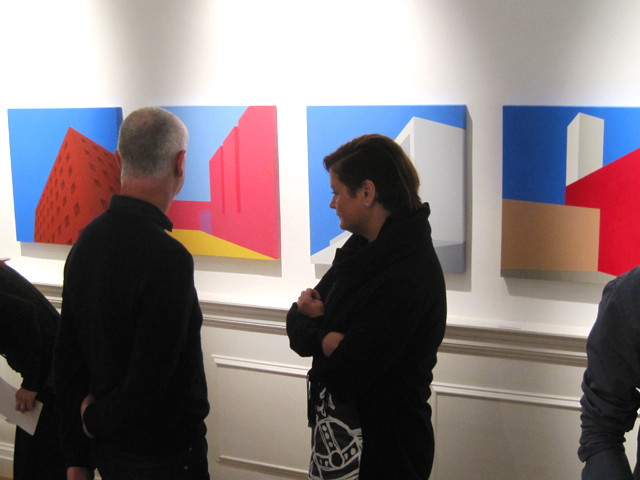Contemporary architecture has often derived inspiration from the different forms and expressions of modern art, generally from abstract art. Many of the iconic buildings of modern architecture, which every architect holds in their mind’s eye, can be directly associated with works of art or artistic movements. These architectural works, having undergone a process of purification and transposition, are like artistic ideas that have been beamed into the real world, at last sharing the same physical dimension as human life, something which only architecture among the arts can achieve. With these buildings, abstract art, a way of interpreting and synthesizing the world, also materializes in that same reality, as if an idea, having passed through a process of transmutation, was returning to its original state. Spada’s work constitutes a latter stage of this altered state, a new transmutation that repositions these buildings within the abstract world of two-dimensional painting on canvas. This passing from one state to another serves to purify form, eliminating all that is superfluous and enhancing the essential – through the suppression of shadow and extraneous elements, for example – and provides the real strength of these paintings.
Spada’s visual work is set within the geometric abstractionism of the early twentieth century that emerged in response to the excessive subjectivism of plastic artists of previous periods and looked to distance itself from the majority of movements that sought to represent a purely emotional three-dimensional reality. Taking his cue from the critical discourse of pioneering abstract artists like Picasso, Malevich or Mondrian, alongside the purism of Le Corbusier or Ozenfant, Spada goes a step further into what might be termed “neopurism”.
His quest for authorial absence leads him to use flat colours that he applies in a way that makes them seem as if they had been produced by mechanical means: with their clean, straight lines that might have been computer-drawn, the very squareness of the canvases – neither landscape nor portrait – the preference for meticulousness over virtuosity, leave no space for the artist’s subjectivity, as he “withdraws” even to the extent of refraining from signing his canvases conventionally, restricting himself to a quasi-official stamp on the back providing brief informative details. As such, Spada’s artwork does not lend itself to analysis in terms of conventional artistic parameters, and this in turn is one of its principal characteristics. His technique, for example, rejects any trace of academicist proficiency, being more akin to that of a painter and decorator, within the scope of anyone of a practical bent. Both in terms of composition and subject matter, he borrows well-known works, largely by celebrated architects, such as Aldo Rossi, Alvaro Siza or Luis Barragán, so that the viewer, drawing on an ingrained visual memory, is lured into perceiving something more than the simple spot colour texture-free abstract shapes that the artist has in reality presented.
Ángel González García




